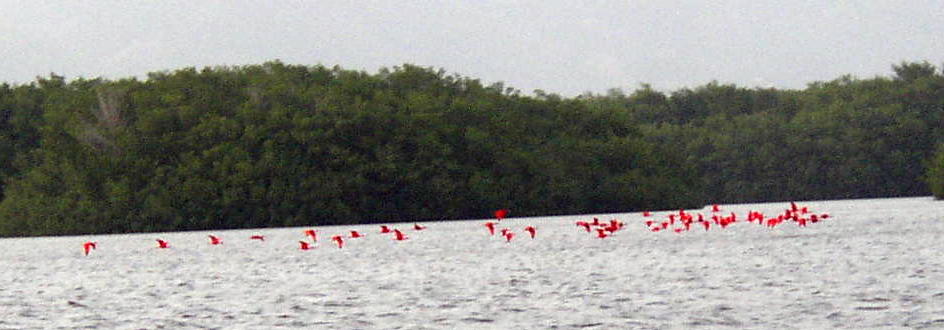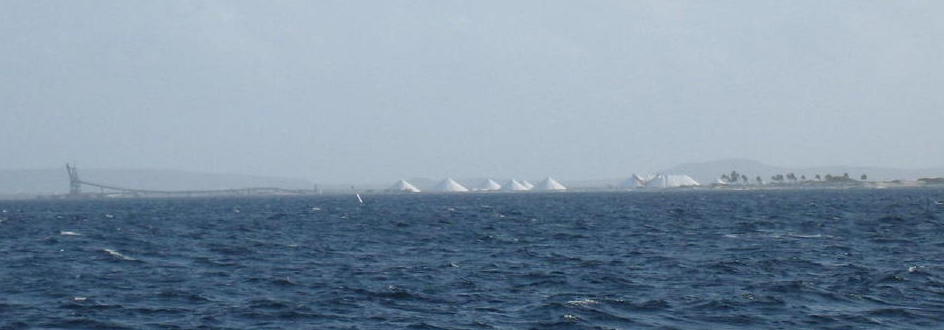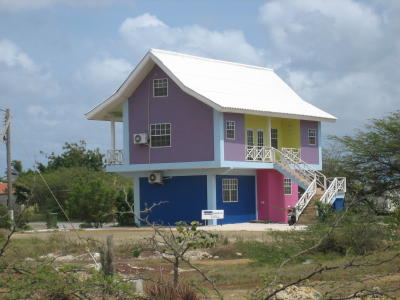Trinidad and Bonaire

|
Joy and Alex never got away from
We think our friends were pleased to see
us, being so terribly frustrated by mechanical problems and defective
replacement parts sent in from abroad.
For our part we were delighted to spend some time with them; we had been
planning to meet up the other side of the ocean ever since we realised that we
were going to cross within twelve months of each other. Also, I was very interested to see
Chaguaramas, it is so well known among yachties as a place to lay up safely
during the hurricane season with all necessary facilities close at hand. The bay was not altogether how I had
imagined it but full of interest and we had a most enjoyable time, including a
trip to the large local mangrove swamp to watch the scarlet ibis, national
symbol of Trinidad, flying in to roost at dusk – they are truly an astonishing
colour. The taxi journey to the
bird sanctuary was not so good though.
Traffic in
We now made a determined attempt to make
some westing and sailed 400+ miles to On the first night out at about 10.00pm
we were visited by a large bird (he certainly looked very large in the dark),
who circled round for a time before settling down on the rear edge of our bimini
sun awning but not before using the canvas extensively as a “bathroom” as our
American cousins would so irritatingly put it. What is more he had clearly been gorging
himself on a large quantity of bad fish.
He shuffled about for an hour, bending down every now and again to see
what the large animal in the cockpit was up to but eventually put his head under
his wing and slept. He flew off
just as the sky was turning a paler shade of grey. So far so interesting but we were really
quite startled when at
Bonaire is a delightful spot with very
friendly people; we have had more little encounters and chats than anywhere
else; everyone from the laundry lady, shop keepers, bar staff, passers-by in the
street and fellow yachties seem more ready to be helpful and outgoing than
elsewhere. The little bar and
restaurant at the end of the pontoon is as good as any we have seen for
location, ambience, food and good natured friendliness of the owner and
staff. Not that life has been
entirely free from risk and danger.
Mags has done another dive – she did one in
We should have left here yesterday but
- more trouble. It is quite frequently necessary to change the engine
oil, oil filter, diesel filter, diesel pre-filter, air filter; clean the sea
water filter, check the sea water pump impeller, stern gland and drive belts;
top up the freshwater coolant and so forth, particularly if longer passages
are due. Following most of this
work I ran up the engine to distribute the clean oil. All tight and smooth running. But now what? It wouldn't stop! I turned the
fuel off and spoke to Bill in Kingsbridge as soon as I could wake up the
following day. He gave me some advice but, like a small boy who takes
apart the kitchen clock, when I came to put it together again I had a small
spring left over which I fitted in the wrong place. I also lost a washer into an
inaccessible part of the bilge and had to fabricate another. Now the
engine would not start or stop. Another early morning call to Bill, a call
back following consultation with his diesel pump expert and away it went .....
and stopped (by design). Hooray! However, yesterday was the Dutch
Queen's birthday and today is Labour Day. So, no labour in the office.
Huh! So we cannot leave till Wednesday. We are not too sorry as we
have been as contented here as anywhere we have
called. There's a bit of nervous tension in the
air as we gather up our skirts for the next part of the trip. We may go to
|



